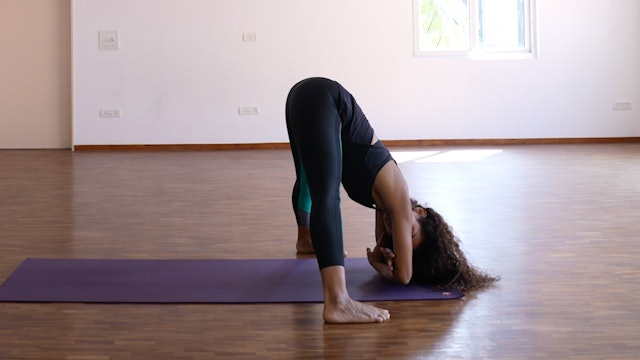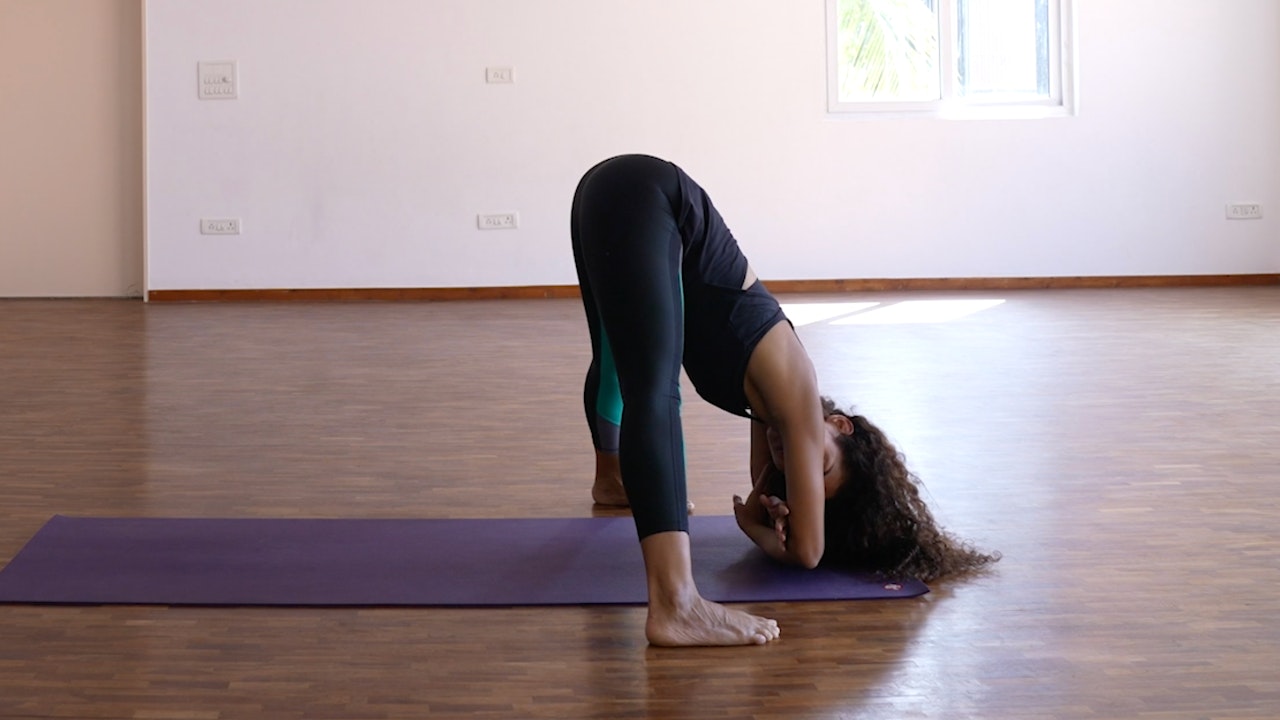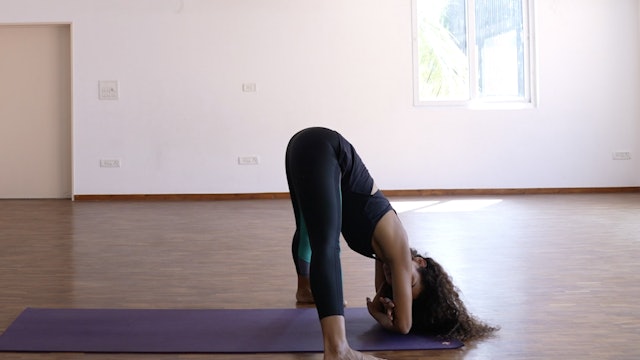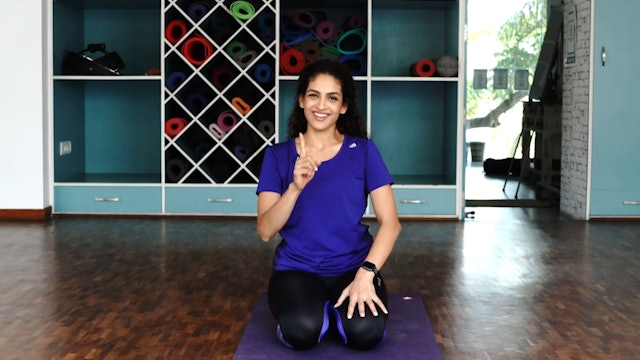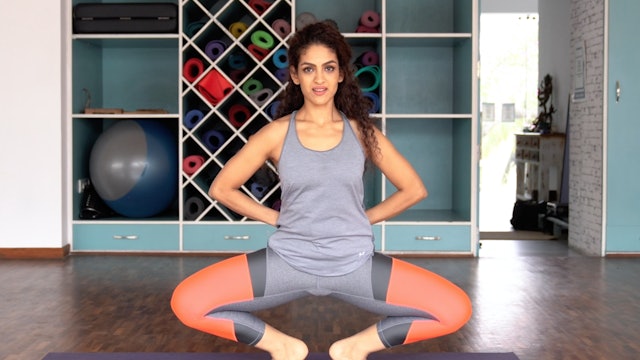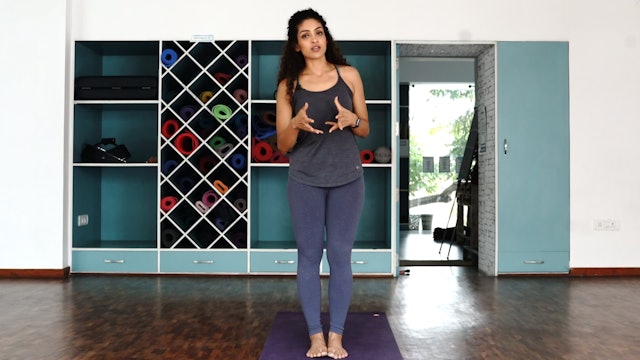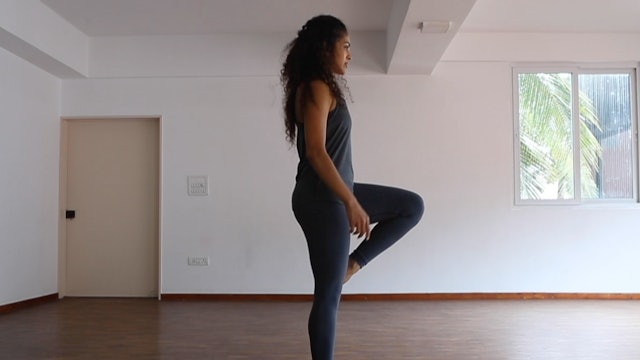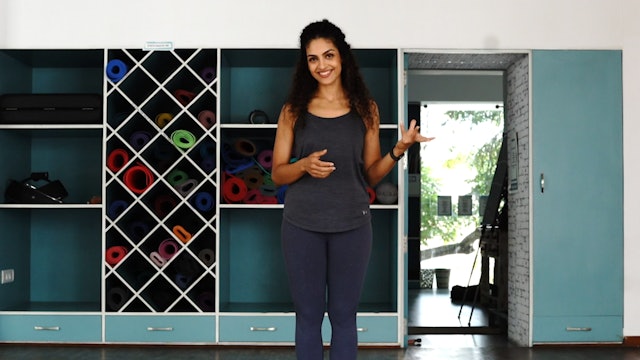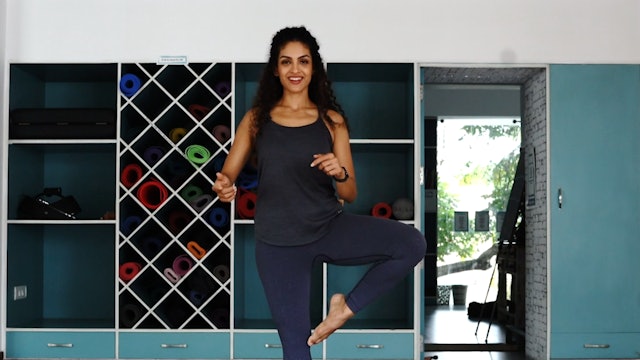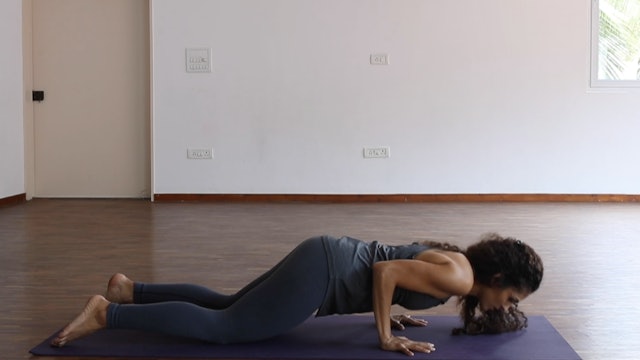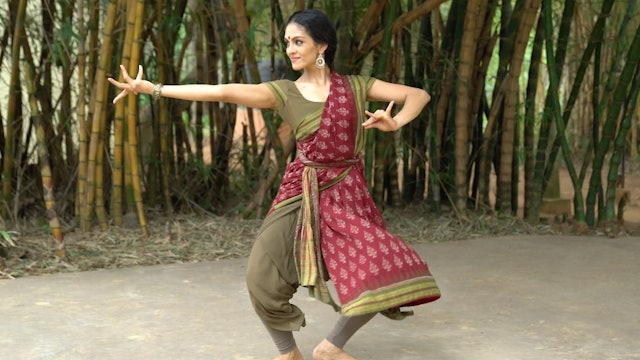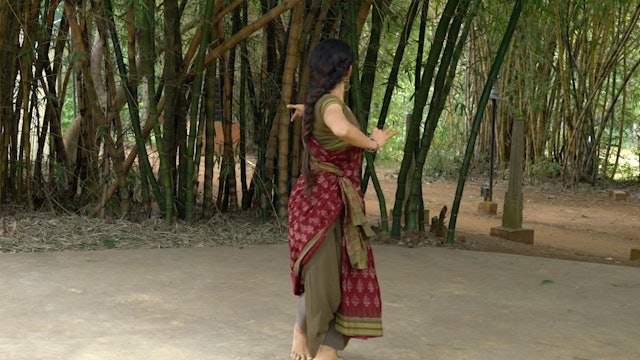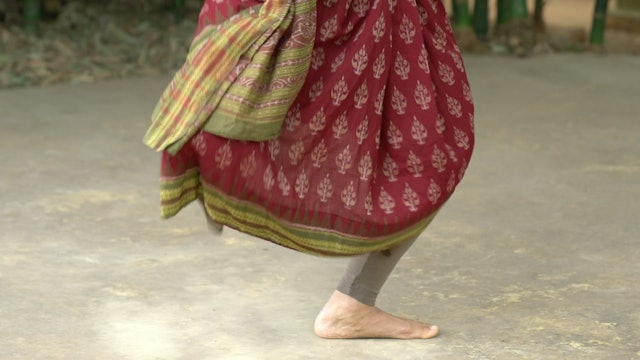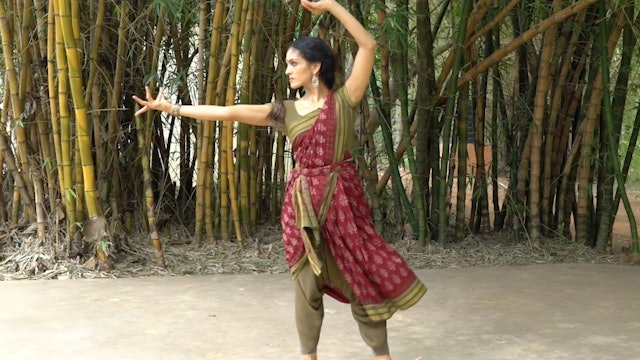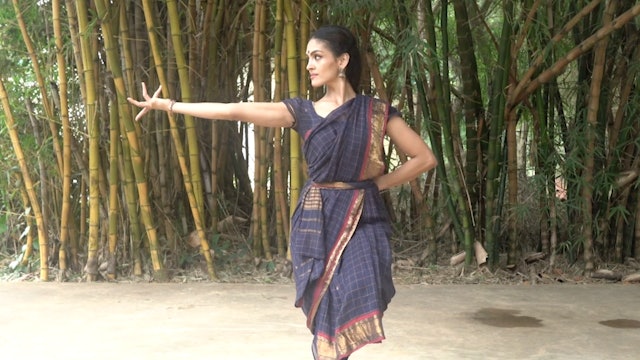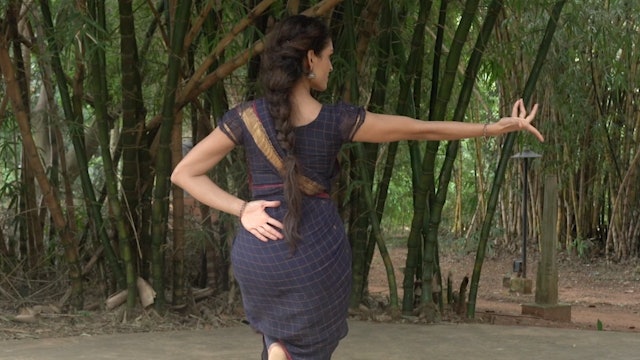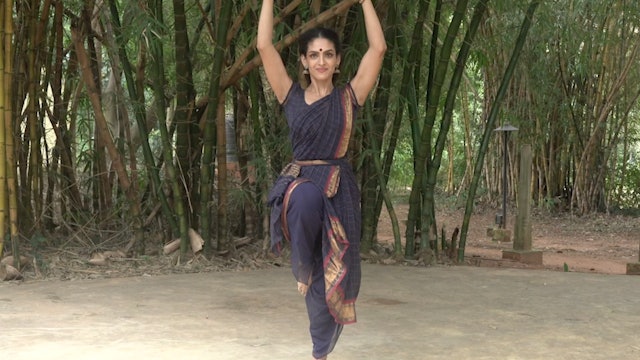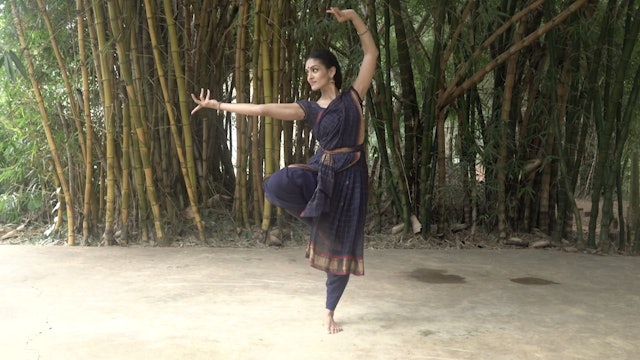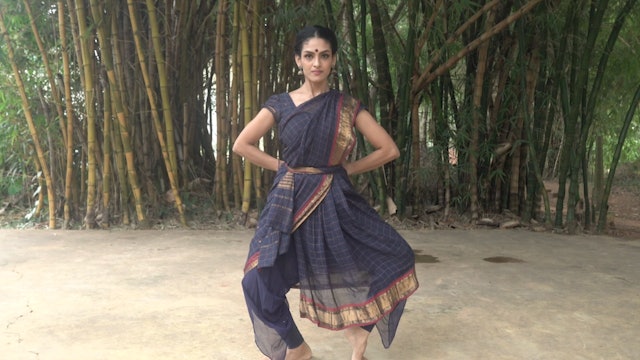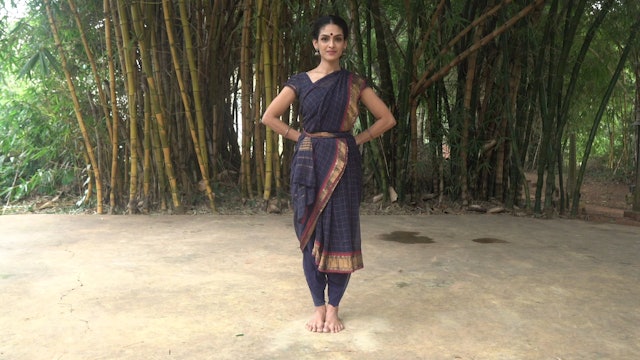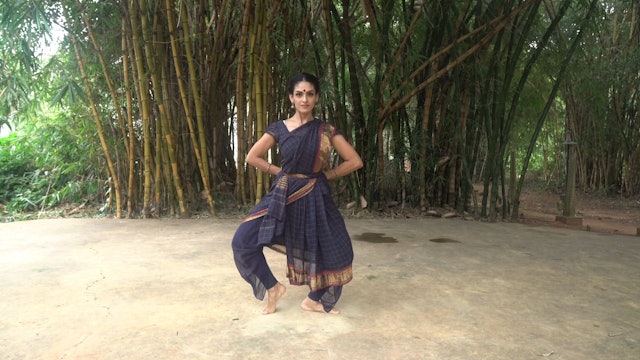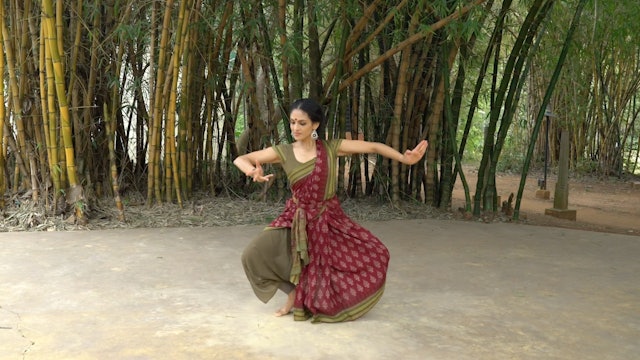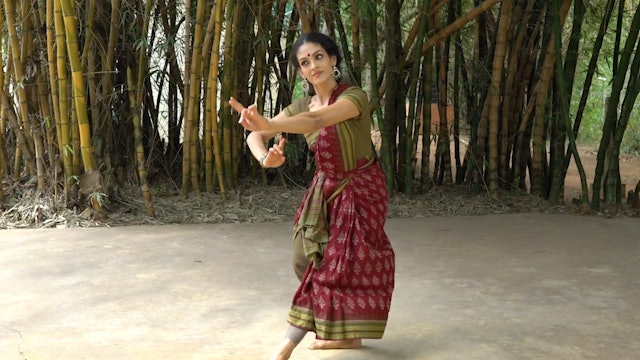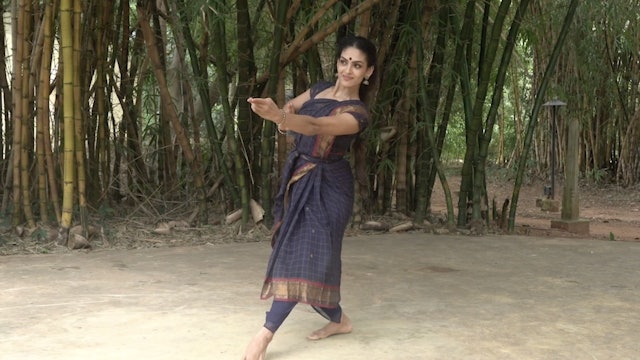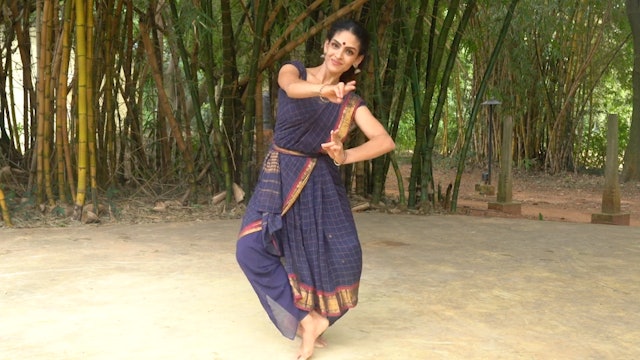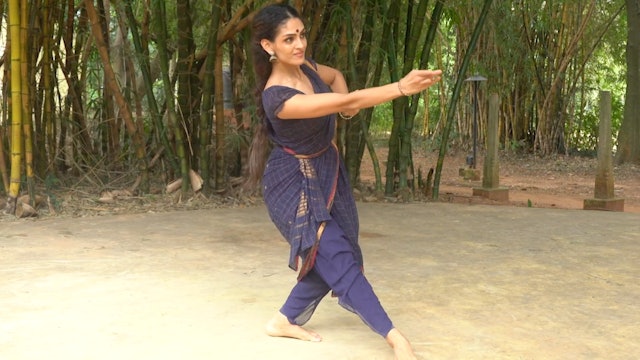Playlist 33
The next Playlist nearly completes the choreography of the Alaripu, and also introduces another Musical warm-up based on previously introduced ideas. The variation in the Serikal adavu, introduces a slide into another Alidam position. Be sure to do enough strength work before progressing to this Serikal Adavu.
-
Musical Warm-up 2
This Warm-up series reinforces ideas that have already been introduced in the previous instructed series. It is recommended to start on the musical warm-ups only once you have practised the instructed series over several months, so you already have internal awareness of alignment.
-
Hip Stabilisers: Gluteals, rotators, adductors.
This works on all the muscles that stabilise at the hip joint. These muscles are needed to lunge with stability, squat with proper muscular engagement and also balance on one leg. These muscles will help the dancer develop stability while dancing and also prevent injuries in the process.
You mu...
-
Aramandi Tips 4
This series will deal with a number of exercises that will work with developing a strong and stable Araimandi. It will also help resolve issues with knee and ankle pain. It must be practised in combination with the Hip openers and Leg strength for maximum benefit.
-
Jumps in Parallel
This series will deal with a number of short exercises that will help the student develop awareness and alignment when jumping. It must be done in combination with the strength exercises to have maximum benefit.
Please do not do the jumps if you experience knee pain.
You must be warmed up befo... -
Skip jumps
This series will deal with a number of short exercises that will help the student develop awareness and alignment when jumping. It must be done in combination with the strength exercises to have maximum benefit.
Please commence this exercise only after, warming up your ankles, and doing some bal...
-
Horse jump prep
This series will deal with a number of short exercises that will help the student develop awareness and alignment when jumping. It must be done in combination with the strength exercises to have maximum benefit.
The horse jump prep, introduces a jump in parallel where the legs use the udvahitam ...
-
Cat jump prep
This series will deal with a number of short exercises that will help the student develop awareness and alignment when jumping. It must be done in combination with the strength exercises to have maximum benefit.
Please commence this exercise only after doing hip openers, warming up your ankles, ...
-
Arm positions: Plank
The positions of the arms are often neglected, without attention to the correct muscular engagement. This series will introduces various usages of the arms in exercises and Bharatanatyam and go through systematically how the position and engagement of muscles should be in each scenario.
This vi...
-
Paraval Adavu 1
Paraval literally means to spread. Some schools of thought also call the Paraval adavu, the 'Pakkadavu' as it moves to the side while sliding. Some others change the name based on the way the foot articulates with the floor. A few of the types of Paraval, can be referred to as Marditam adavau, as...
-
Paraval Adavu 2
Paraval literally means to spread. Some schools of thought also call the Paraval adavu, the 'Pakkadavu' as it moves to the side while sliding. Some others change the name based on the way the foot articulates with the floor. A few of the types of Paraval, can be referred to as Marditam adavau, as...
-
Parval Adavu 3
Paraval literally means to spread. Some schools of thought also call the Paraval adavu, the 'Pakkadavu' as it moves to the side while sliding. Some others change the name based on the way the foot articulates with the floor. A few of the types of Paraval, can be referred to as Marditam adavau, as...
-
Bramari Adavu
Bramari literally means to turn. The first Bramari adavu is introduced in the second set of Adavus, the other varieties will be introduced subsequently. It is important to keep the eyes focussed at a particular point and turn the head faster than the body.
Things to keep in mind:
- When stretc... -
Bramari Adavu 2
Bramari literally means to turn. The second Bramari adavu that we practise in the Raadha Kalpa method introduces, quarter, half and full turns.
These turns are used in choreography to change direction with precision.
Things to keep in mind:
- The lengthening of the bent knee and the turn happ... -
Bramari Adavu 3
Bramari literally means to turn. The third Bramari adavu that we practise in the Raadha Kalpa method introduces half turns while using the same technique as the previous Bramari.
These turns are used in choreography to change direction with precision.
Things to keep in mind:
- The lengthening o... -
Bramari Adavu 4
Bramari literally means to turn. The fourth Bramari adavu that we practise in the Raadha Kalpa method introduces full turns while using the same technique as the third Bramari adavu.
The arm movement is varied in this turn just so students can practise a different combination of upper an lower ...
-
Bramari Adavu 5
Bramari literally means to turn. The fifth Bramari adavu that we practise in the Raadha Kalpa method introduces full turns while changing the technique of the turn.
The arm movement is like the first Bramari Adavu, and the leg movement incorporates a swivel.
This Adavu is usually not done in v...
-
Thattu Mettadavu 1 : Tishram
This Adavu has two components, a tapping action with one foot that comprises of the Thattu, and the Udgattitham action on the other leg with a heel. Sometimes both the tap and the Udgattitam can happen on the same foot, depending on the Jathi.
Pointers:
- Try to make sure the heel is lifted pro... -
Thattu Mettadavu 2 : Chatushram
This Adavu has two components, a tapping action with one foot that comprises of the Thattu, and the Udgattitham action on the other leg with a heel. Sometimes both the tap and the Udgattitam can happen on the same foot, depending on the Jathi.
Pointers:
- Try to make sure the heel is lifted pro... -
Thattu Mettadavu 3 : Khandam
This Adavu has two components, a tapping action with one foot that comprises of the Thattu, and the Udgattitham action on the other leg with a heel. Sometimes both the tap and the Udgattitam can happen on the same foot, depending on the Jathi.
Pointers:
- Try to make sure the heel is lifted prop... -
Ta hata Jumtari ta Adavu
The "Ta hata jumtari ta" Adavu, is named after the syllables that are used in the practice of the Adavu. This practise is common amongst most lineages of Bharatanatyam.
The Adavu is a combination of various movements. It has the 'di, di tai" action with the Tattu and Naatu, from the muktaya ada...
-
Kartharee Adavu 1
The Kartharee adavu is a movement that begins with a jump, followed by the crossing of the legs. The name could come from the hasta that is used or from the fact that the legs cross.
The bends of the bodies vary in the various types of Kartharee adavu. We usually practice this Adavu to a three ...
-
Kartharee Adavu 2
The Kartharee adavu is a movement that begins with a jump, followed by the crossing of the legs. The name could come from the hasta that is used or from the fact that the legs cross.
The bends of the bodies vary in the various types of Kartharee adavu. We usually practice this Adavu to a three c...
-
Kartharee Adavu 3
The Kartharee adavu is a movement that begins with a jump, followed by the crossing of the legs. The name could come from the hasta that is used or from the fact that the legs cross.
The bends of the bodies vary in the various types of Kartharee adavu. We usually practice this Adavu to a three c...
-
Kartharee Adavu 4
The Kartharee adavu is a movement that begins with a jump, followed by the crossing of the legs. The name could come from the hasta that is used or from the fact that the legs cross.
The Last kartharee adavu uses a big jump to land with the legs crossed.
The arms move in a complete mandala, cir...
